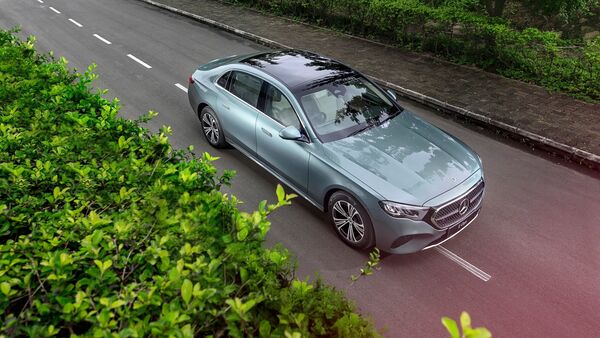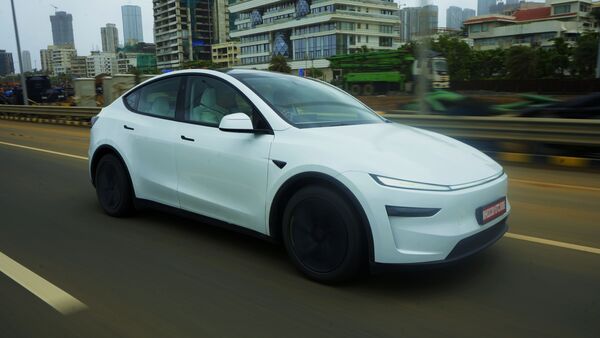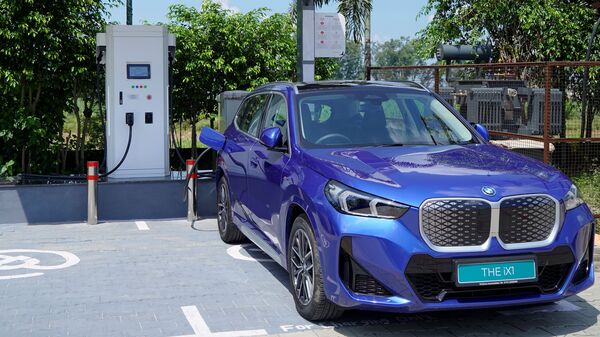Major metro centres like Mumbai and Delhi continued to drive the sales momentum for luxury cars, followed by emerging markets like the NCR, Bengaluru, Chennai, and Hyderabad. Mercedes-Benz recently revealed that the penetration of luxury cars in South Mumbai is on par with developed markets at six per cent, a reflection of the burgeoning affluent population.
Muted sales amidst economic uncertainty

The luxury auto sector concluded CY2024 with 51,500 units sold, a record high, with the numbers exceeding the 50,000 mark for the first time. Mercedes-Benz, BMW, and JLR (Jaguar Land Rover) were the top gainers reporting a double-digit growth last year. However, luxury auto brands kicked off 2025 with more subdued demand from consumers. Economic uncertainty, followed by frequent price hikes and geopolitical tensions, meant consumers postponed purchases in the first half of the year. Brands were expected to experience flat or even negative growth in the first few quarters of 2025, following a bullish run in the post-pandemic era. Approximately 22,900 luxury cars were sold in the first half of 2025, representing a 1.8 per cent increase over the same period in 2024.
The Mercedes-Benz E-Class LWB remained the top seller for Mercedes-Benz India, and continues to lead the luxury car market as the undisputed bestseller. BMW has had a vibrant year with the success of the locally assembled iX1 Long Wheelbase (LWB). Built specifically for the Indian market, the electric SUV was the highest-selling electric car during this period, followed by the flagship BMW i7 in second spot. Notably, BMW doubled down on the long wheelbase strategy with models like the 5 Series and 3 Series, giving it a significant advantage in the segment. The 5 Series was the highest-selling BMW sedan in H1 2025 with close to 20 per cent share in sales, while the BMW 3 Series retained the class-leading position in the Indian premium sedan segment, against the C-Class. Overall, the long wheelbase BMW models registered a massive growth of 159 per cent in H1 2025, accounting for 47 per cent share in total sales.
Santosh Iyer, Managing Director & CEO, Mercedes-Benz India, says, “2025 has been a mixed year so far from a pre and post GST 2.0 perspective. Until August, the overall sentiment in the automotive industry has largely remained muted, with softening of demand impacting sales, making the industry apprehensive of the upcoming festive season. However, tax reforms in the form of GST 2.0 announced have given a strong impetus to the overall consumer sentiment in general, with strong momentum now expected to drive higher consumption during the festive season, resulting from higher purchasing power.”
For the third bestselling luxury carmaker, Jaguar Land Rover’s (JLR) strategy to locally assemble its big SUVs certainly paid off. The automaker began the assembly of Range Rover (LWB) and Range Rover Sport in India last year, bringing a significant price drop in both models. This has only led to higher demand, even as the fully imported Defender leads the sales charts for the British carmaker. With launches like the Range Rover SV Masāra Edition limited to just 12 examples for the market, JLR has been vocal about the importance of India’s luxury segment for the brand.
Also Read : From reforms to record sales – How 2025 is becoming a turning point for India’s automobile industry
Penetration of EVs

The luxury auto sector has also witnessed a stronger adoption of electric vehicles than the mass-market space. Industry data suggests the EV penetration in the luxury segment stands at 11 per cent, while the penetration is relatively low at about 3 per cent in the mass-market space. Nearly all luxury carmakers have EVs priced well over ₹1 crore on sale in India, while BMW and BYD have been steadily building momentum in the ₹50-60 lakh entry-level premium segment. The industry attributes this to a more evolved customer base in the luxury space, willing to experiment with their choices.
Models like the Mercedes-Benz EQS SUV and even the electric G-Class are witnessing strong demand, while BMW has managed over 5,000 electric car deliveries so far this year. The ₹50-60 lakh space has also found competition from brands like Kia with the EV6, Hyundai Ioniq 5, and the new Volvo EX30 making their way in this space.
However, the luxury EV space is seeing some activity with Tesla’s entry. The American EV maker marked its arrival earlier this year, amidst much fanfare, setting shop in Mumbai and Delhi. The Tesla Model Y is the brand’s maiden offering in India and has received over 600 bookings in a few weeks of arrival, a notable number for the automaker that had long sought to enter the market. While Tesla largely retails in the mass-market space in the US, the brand is positioning itself as a luxury player in India with the Model Y arriving as a pure import.
Its arrival also comes at a time when the tariff war between the US and India is in full swing. India also plays a crucial role in Tesla’s growth story globally, as sales have slowed down in the carmaker’s core markets. While the brand won’t be investing heavily in India in the short term, it is here to stay and further fuel the EV sector’s ambitions with better charging infrastructure, more competitiveness, and, more importantly, higher innovation.
GST Reforms and pent-up demand

After a rather subdued year so far for the auto sector, the GST 2.0 reform is bringing festive cheer to the market. The reduction in GST rates for luxury vehicles to a uniform 40 per cent is expected to drive the pent-up demand from July and August into the festive season. Luxury automakers are looking at this year’s festive season to be the best-ever. However, Ravi Bhatia, President and Director – JATO Dynamics India, an automotive data analysis company, suggests that demand won’t be explosive but rather incremental. “We are not seeing a big jump into luxury, but it will continue to maintain its course.”
Luxury brands have announced price cuts by up to ₹30 lakh on select models, passing on the GST benefits to customers. The Mercedes-Benz S-Class is cheaper by ₹11 lakh, while the GLC has seen a reduction of ₹5.3 lakh. Similarly, the BMW X7 and X5 are now more affordable by ₹9.23 lakh and ₹6.82 lakh, respectively. The Audi Q8 has also witnessed an ₹8 lakh price drop. The Range Rover is now more affordable by about ₹30 lakh, while the Defender gets more competitive with a near ₹7 lakh price reduction.
The 6-7 per cent reduction in overall pricing is expected to stimulate demand in the festive season. The price drop could lift luxury sales by 10-15 per cent in FY2026, aiding inventory clearance amid a ₹2,500 crore dealer overhang. However, the luxury car buyer is not exactly waiting for a major price change to affect their buying decisions.
As Bhatia explains, “The buyers who can afford luxury cars are not really impacted by the economic turmoil. They are wealthy people who have a rhythm of car replacement. They keep cars every two-and-a-half to three years. They get bored and buy a new car. There’s depreciation available. So I think that will keep driving the market. But the salary people who at one point wanted to enter the luxury space will have to reconsider their purchase. There is nervousness for the salaried class, who want to say I’ve arrived in life with their luxury purchase. However, if you’re a CXO-level person, I don’t think you are impacted.”
The GST reduction also gives luxury carmakers more breathing room amidst tremendous cost pressure due to the rupee devaluation. The local assembly of models has helped brands shield themselves from the fluctuating rupee value. But there is no denying that the luxury auto sector has been heavily impacted by the same. Experts suggest the reduction in prices should keep the market going for another four to six months before carmakers announce price hikes in the new calendar year.
“We are witnessing a spurt in customer queries and bookings, and we expect this festive season to be one of the best for Mercedes-Benz in the recent past,” says Santosh Iyer. “For the festive season, we expect to sell 5,000-5,500 vehicles during September-November, supported by our comprehensive ‘Dream Days’ campaign. Our outlook remains positive for the remaining year, as we expect sales to pick up momentum in the December quarter”
Hardeep Singh Brar, CEO – BMW Group India, says, “The reduction in GST rates aligns with the government’s vision of a vibrant, economically resilient India and is expected to bolster purchasing power ahead of the festive season. In particular, the 40 per cent GST on premium cars without an additional cess is a favourable development for the premium segment, supporting continued market momentum and encouraging new sales.”
For the EV buyer, the government’s decision to retain it under the 5 per cent GST slab promises higher adoption. Brar adds, “The retention of 5 per cent GST on all passenger BEV cars underscores the government’s steadfast commitment to sustainable mobility and the broader EV transition. A stable tax regime in this space provides automakers with the confidence to plan long-term product investments and expansions under the ‘Make in India’ initiative, aiding the nation’s target of higher EV penetration by 2030.”
Also Read : Indian Auto Ancillary Industry in 2025 – Moving from the Backstage to the Global Center Stage
More demand incoming

The luxury auto space isn’t relying on the GST reduction alone; the India-UK Free Trade Agreement (FTA) is expected to further improve demand. Under the FTA agreement, import duties on made-in-UK vehicles will be slashed from over 100 per cent to roughly 10 per cent, subject to a defined annual quota. This concession will be phased in gradually over the next 10–15 years, with safeguard measures to shield India’s domestic auto industry as its own production capacity expands.
British automotive giants like Rolls‑Royce, Bentley, Aston Martin and more, will benefit immediately with the deal, enabling the import of premium electric and combustion vehicles at dramatically lower costs. For instance, a Bentley Bentayga that retails at about ₹4 crore could see a 40 per cent reduction in price. For British two-wheeler brands like Triumph and Norton, the move promises a more direct access to India’s luxury space. The FTA is also expected to boost the Indian auto component sector, particularly those with existing exposure to the UK, bringing a significant cost advantage and growth prospects for manufacturers on either side of the spectrum.
The Indian luxury auto sector is poised for growth, driven by increasing disposable incomes and a growing number of high-net-worth (HNI) individuals. This, coupled with the introduction of new and more tech-savvy luxury cars, is only fuelling the demand in the luxury auto sector. A luxury vehicle, after all, isn’t just about comfort. It’s about making a statement of a thriving buyer, and by extension, a thriving market. The favourable policy reforms and a dynamic consumer base only solidify a growing luxury market, paving the way for more possibilities.
Get insights into Upcoming Cars In India, Electric Vehicles, Upcoming Bikes in India and cutting-edge technology transforming the automotive landscape.
First Published Date: 14 Oct 2025, 18:00 pm IST







